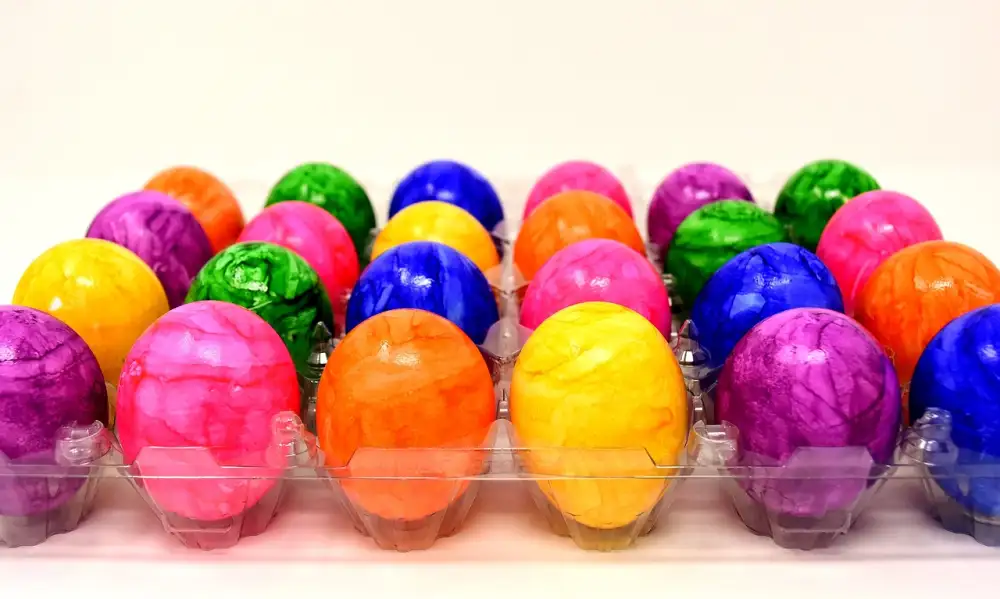Delight in the Magic of Easter with Our Irresistible Easter Bread Recipe

Easter is a time of joy and celebration, and what better way to indulge in the festivities than with a delicious slice of Easter bread? This traditional treat has been enjoyed for centuries, bringing families together and adding a touch of magic to the holiday season. With its soft texture, sweet aroma, and beautiful decorations, Easter bread is truly a delight for the senses. Join us as we explore the history, significance, and irresistible recipe of this beloved Easter tradition. Get ready to experience food magic in every bite!
History and Significance of Easter Bread
Easter bread holds a special place in the hearts and homes of many cultures around the world. Its history can be traced back to ancient times, where it was seen as a symbol of fertility and rebirth. The tradition of baking Easter bread during this festive season has been passed down through generations, symbolizing new beginnings and the resurrection of Christ. It is believed that sharing this bread with loved ones brings good luck and blessings for the year ahead. The significance of Easter bread goes beyond its delicious taste; it represents unity, love, and the joyous spirit of Easter celebrations.
Ingredients for Easter Bread
To create this delectable Easter treat, you will need the following ingredients:
1. 4 cups all-purpose flour: This forms the base of the bread and gives it a soft texture.
2. 1/2 cup granulated sugar: Adds sweetness to the bread.
3. 1/2 teaspoon salt: Balances the flavors and enhances the taste.
4. 1 package active dry yeast: Helps in the rising process of the dough.
5. 1/2 cup warm milk: Activates the yeast and adds moisture to the dough.
6. 1/4 cup unsalted butter, melted: Provides richness and flavor to the bread.
7. 3 large eggs: Adds structure and richness to the dough.
8. 1 teaspoon vanilla extract: Enhances the overall flavor profile of the bread.
9. Zest of one lemon or orange (optional): Adds a refreshing citrusy aroma to the bread.
10. 1/2 cup raisins or currants (optional): Gives a burst of sweetness and texture.
These ingredients come together to create a heavenly Easter bread that will delight your taste buds and bring joy to your celebrations.
Step-by-Step Instructions for Making Easter Bread
1. In a large mixing bowl, combine 2 cups of flour, ½ cup of sugar, 1 packet of yeast, and a pinch of salt.
2. In a separate bowl, whisk together 3 eggs, ½ cup of melted butter, and ¾ cup of warm milk.
3. Gradually pour the wet ingredients into the dry ingredients while stirring with a wooden spoon.
4. Slowly add another 2 cups of flour until the dough becomes sticky but manageable.
5. Transfer the dough onto a floured surface and knead for about 5 minutes until it becomes smooth and elastic.
6. Place the dough in a greased bowl, cover it with a damp cloth, and let it rise in a warm place for about an hour or until doubled in size.
7. Punch down the risen dough to release any air bubbles and divide it into three equal parts.
8. Roll each portion into long ropes and braid them together tightly.
9. Place the braided bread on a baking sheet lined with parchment paper and let it rise again for about 30 minutes.
10. Preheat the oven to 350°F (175°C) while waiting for the bread to rise.
11. Brush the top of the bread with beaten egg wash for a shiny finish.
12. Bake the Easter bread for approximately 25-30 minutes or until golden brown on top.
13. Remove from the oven and let it cool completely before slicing and serving.
Follow these simple steps to create your own homemade Easter bread that will impress your family and friends with its delicious taste and beautiful presentation!
Tips and Tricks for Perfect Easter Bread
To ensure that your Easter bread turns out perfectly every time, here are some tips and tricks to keep in mind:
1. Use fresh ingredients: Make sure your flour, yeast, and other ingredients are fresh for the best results.
2. Activate the yeast: To ensure a good rise, activate the yeast by dissolving it in warm water with a pinch of sugar before adding it to the dough.
3. Knead well: Properly kneading the dough helps develop gluten and creates a light and airy texture. Knead for at least 10 minutes or until the dough is smooth and elastic.
4. Allow for proper rising: Give the dough enough time to rise in a warm, draft-free place until it has doubled in size. This usually takes about 1-2 hours.
5. Shape carefully: When shaping the bread, make sure to tuck in any loose ends tightly to prevent them from unraveling during baking.
6. Brush with egg wash: Before baking, brush the top of the bread with an egg wash made from beaten egg and a splash of milk or water. This will give it a beautiful golden color.
7. Don't rush cooling: Allow the bread to cool completely on a wire rack before slicing into it. This will prevent it from becoming gummy or collapsing.
By following these tips, you'll be able to create a perfect Easter bread that is not only visually stunning but also incredibly delicious!
Variations and Additions to Easter Bread
While the traditional Easter bread recipe is undeniably delicious, there are also various ways to add a unique twist to this classic treat. Here are a few ideas to help you get creative with your Easter bread:
1. Fruit and Nut Mix-ins: Enhance the flavor and texture of your Easter bread by adding dried fruits like raisins, cranberries, or chopped apricots. You can also include a variety of nuts such as almonds, walnuts, or pistachios for an extra crunch.
2. Citrus Zest: For a refreshing twist, try incorporating citrus zest into your dough. The bright flavors of lemon, orange, or lime will give your Easter bread a delightful tangy kick.
3. Chocolate Swirls: Indulge your sweet tooth by swirling melted chocolate into the dough before baking. Opt for dark chocolate, milk chocolate, or even white chocolate for a decadent surprise in every bite.
4. Spiced Infusions: Experiment with different spices like cinnamon, nutmeg, cardamom, or even ginger to infuse your Easter bread with warm and aromatic flavors that will fill your kitchen with an irresistible aroma.
5. Decorative Toppings: Make your Easter bread visually appealing by adding decorative toppings such as colored sprinkles, candied fruits, or even edible flowers. This will not only make it look more festive but also add an extra layer of flavor and texture.
Remember that these variations are just suggestions - feel free to mix and match ingredients according to your taste preferences and creativity. The possibilities are endless when it comes to customizing your Easter bread recipe!
By adding these unique twists to the traditional recipe, you can create an Easter bread that is truly one-of-a-kind and sure to impress everyone at your holiday gathering.
Serving and Enjoying Easter Bread
Once your Easter bread is baked to golden perfection, it's time to savor its delicious flavors. The aroma of freshly baked bread fills the air, enticing everyone in the vicinity. To serve, slice the bread into thick slices or tear it apart for a rustic touch.
Easter bread is versatile and can be enjoyed in various ways. Spread a generous layer of butter on each slice for a simple yet satisfying treat. For those with a sweet tooth, drizzle some honey or sprinkle powdered sugar over the top.
If you're feeling adventurous, try pairing Easter bread with different spreads like Nutella, fruit preserves, or cream cheese. The soft and fluffy texture of the bread complements these toppings perfectly.
Easter bread also makes a delightful addition to brunch or afternoon tea. Serve it alongside a selection of cheeses, cured meats, and fresh fruits for an elegant spread. The combination of savory and sweet flavors will surely please your guests.
Don't forget to accompany your Easter bread with a hot cup of coffee or tea. The warm beverage enhances the taste and creates a cozy atmosphere for enjoying this traditional treat.
Whether you're celebrating Easter with family or hosting a gathering with friends, serving Easter bread is sure to impress everyone at the table. Its rich history and symbolic significance make it more than just another loaf of bread – it's a centerpiece that brings people together in celebration.
So go ahead, indulge in the magic of Easter by sharing this irresistible bread with your loved ones. Let its heavenly taste transport you to a world where traditions come alive through food.
In conclusion, Easter bread is not just a simple baked good, but a delicious tradition that brings joy and togetherness during the Easter season. Its rich history and significance make it a must-have for any Easter celebration. With its sweet aroma and soft texture, Easter bread is sure to delight your taste buds and create lasting memories with your loved ones. So this year, why not try our irresistible Easter bread recipe and experience the magic of this delightful treat for yourself? Happy baking and happy Easter!
Published: 09. 12. 2023
Category: Home



